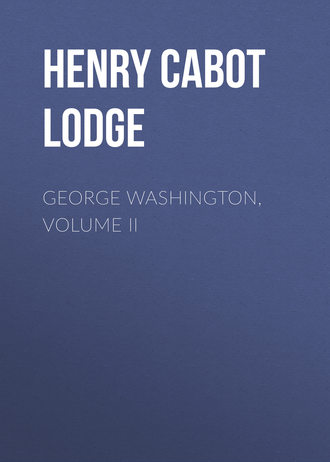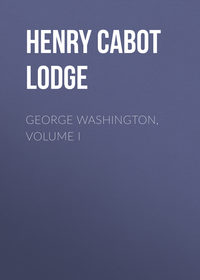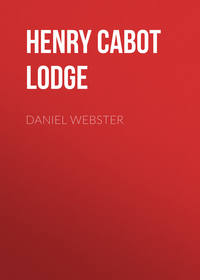 полная версия
полная версияGeorge Washington, Volume II
4
The most lately published contemporary account of this affair with Hancock can be found in the Magazine of American History, June, 1888, p. 508, entitled "Incidents in the Life of John Hancock, as related by Dorothy Quincy Hancock Scott (from the Diary of Gen. W.H. Sumner)."
5
Sparks, Writings of Washington, x. 98.
6
The italics are mine.
7
The italics are mine.
8
The italics are mine.
9
See the Letter to the Due de Liancourt explaining the reasons for his not being received by the President. (Sparks, xi. 161.)
10
"As an analysis of this position, look to the pending election of governor in Pennsylvania."
11
These italics are mine.
12
These italics are mine.
13
See letter to Bushrod Washington, Sparks, vi. p. 387.
14
Life of Silliman, vol. ii. p. 385.
15
It was called at the time a quinsy.
16
See Memoir on The Last Sickness of Washington, by James Jackson, M.D. In response to an inquiry as to the modern treatment of this disease, the late Dr. F.H. Hooper of Boston, well known as an authority on diseases of the throat, wrote me: "Washington's physicians are not to be criticised for their treatment, for they acted according to their best light and knowledge. To treat such a case in such a manner in the year 1889 would be little short of criminal. At the present time the physicians would use the laryngoscope and look and see what the trouble was. (The laryngoscope has only been used since 1857.) In this disease the function most interfered with is breathing. The one thing which saves a patient in this disease is a timely tracheotomy. (I doubt if tracheotomy had ever been performed in Virginia in Washington's time.) Washington ought to have been tracheotomized, or rather that is the way cases are saved to-day. No one would think of antimony, calomel, or bleeding now. The point is to let in the air, and not to let out the blood. After tracheotomy has been performed, the oedema and swelling of the larynx subside in three to six days. The tracheotomy tube is then removed, and respiration goes on again through the natural channels."
17
Mr. Matthew Arnold, and more recently Professor Goldwin Smith, have both spoken of Washington as an Englishman. I do not mention this to discredit the statements of Mr. Lowell or Mr. King, but merely to indicate how far this mistaken idea has traveled.
18
See the very interesting memoir on this subject by the Hon. J.C. Bancroft Davis.
19
Magazine of American History, vol. iii., 1879, p. 81.
20
Memoir of Rt. Rev. William Meade, by Philip Slaughter, D.D., p. 7.
21
These facts in regard to Washington's early letters, and to his correspondence generally, were first brought to public attention by the Reed letters, and by the controversy between Mr. Sparks and Lord Mahon. They have, of course, been long familiar to students of the original manuscripts. The full extent, however, of the changes made by Mr. Sparks, and of the mischief he wrought, and of the injustice thus done both to his hero and to posterity, has but lately been made known generally by the new edition of Washington's papers which have been published, under the supervision of Mr. W.C. Ford. Washington himself, when he undertook to arrange his military and state papers after his retirement from the presidency, began to correct the style of some of his earlier letters. This was natural enough, and he had a right to do what he pleased with his own, even if he thereby injured the material of the future historian and biographer. But he did not proceed far in his work, and the fact that he corrected a few of his own letters gave Mr. Sparks no right whatever to enter upon a wholesale revision.
22
At his death the appraisers of the estate found 863 volumes in his library, besides a great number of pamphlets, magazines, and maps. This was a large collection of books for those days, and showed that the possessor, although purely a man of affairs, loved reading and had literary tastes.
23
Parkinson's Tour in America, 1798-1800, 437 and ff.
24
The Marquis de Chastelleux speaks of the perfect training of Washington's saddle horses, and says the general broke them himself. He adds "He (the general) is an excellent and bold horseman, leaping the highest fences and going extremely quick, without standing upon his stirrups, bearing on the bridle or letting his horse run wild; circumstances which our young men look upon as so essential a part of English horsemanship, that they would rather break a leg or an arm than renounce them."
25
Lear in his memoranda published recently in full in McClure's Magazine for February, 1898, states that Washington measured after death six feet three and one half inches in height, a foot and nine inches across the shoulders, two feet across the elbows; evidently a spare man with muscular arms, which we know to have been also of unusual length.
26
This letter, recently printed, is in the collection of Dr. Toner, at Washington. It contains some obvious errors, as in regard to the color of the eyes, but it is nevertheless very interesting and valuable.
27
The charge in the pamphlet purporting to give an account of the trial of the New York conspirators in 1776 is of such doubtful origin and character that it hardly merits consideration, and the only other allusion is in the well-known intercepted letter of Harrison, which is of doubtful authenticity in certain passages, open to suspicion from having been intercepted and published by the enemy and quite likely to have been at best merely a coarse jest of a character very common at that period and entirely in keeping with the notorious habits of life and speech peculiar to the writer. (See Life of John Adams, iii. 35.)





